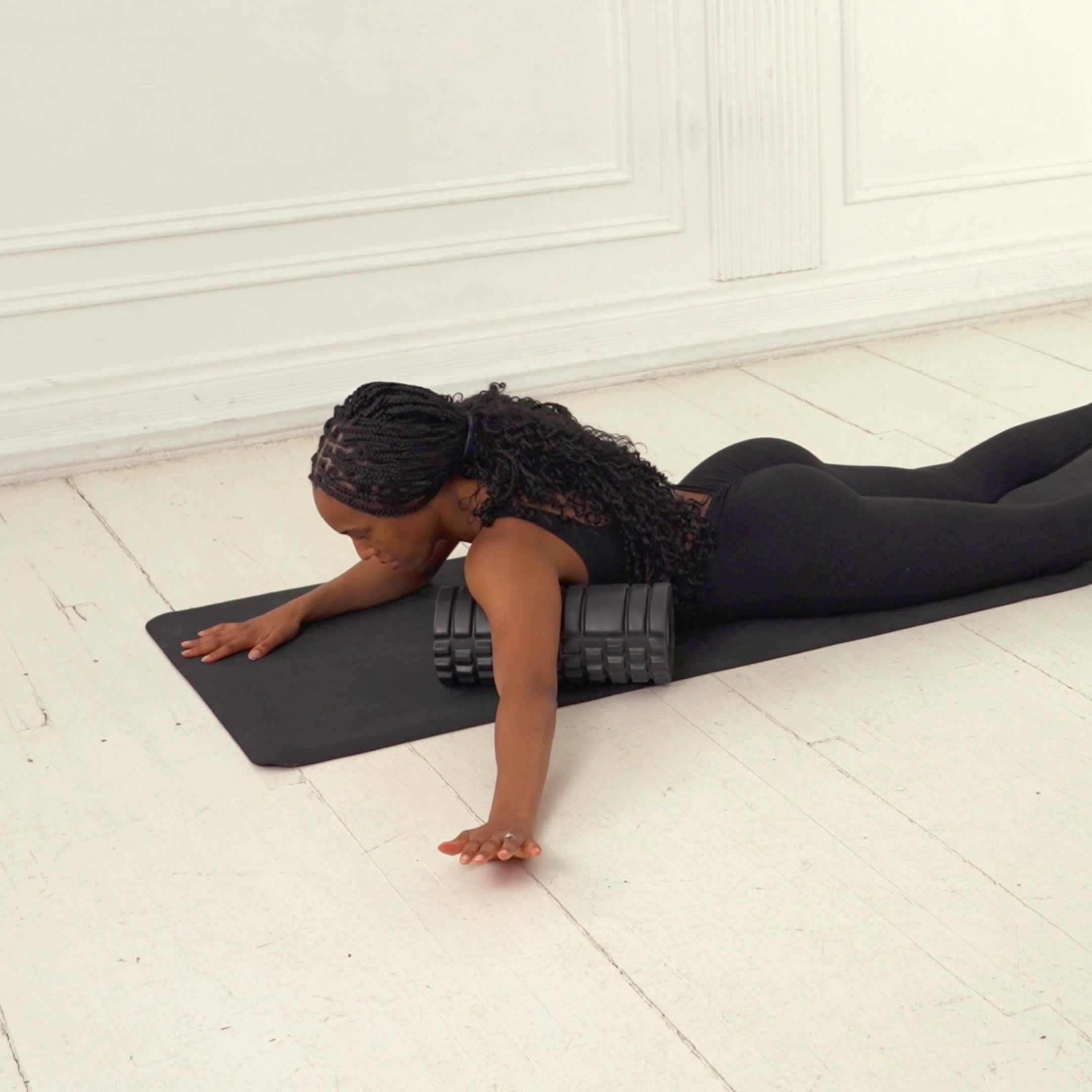Foam Roller Posterior Shoulder
Foam roller self-myofascial release targeting rear deltoids, lats, and upper back to alleviate tightness and enhance shoulder mobility; commonly used in recovery or warmups.
About Exercise
Equipment
Others
Difficulty
1/5 • Beginner
Primary Muscle Groups
Shoulders, Lats
Secondary Muscles
Lower Back
Popularity Score
6
Goals
Training Style
Setup Requirements
Requires Rack
No
Requires Bench
No
Requires Spotter
No
Space Needed
Small
Noise Level
Low
Muscle Breakdown
View Muscle MapShoulders
9/10Rear Delts
Lats
8/10Traps
7/10Upper Traps, Mid Traps
Lower Back
4/10Programming
Typical Rep Range
1-5 reps
Rest Between Sets
30-60 seconds • Breathe deeply between holds
How to Perform
Lie on your side with the foam roller positioned in the posterior shoulder and armpit area under soft tissue. Support your body with your free arm and legs for stability.
- Shift body weight onto the roller to find tender spots.
- Pause and apply pressure on tight areas for 30-60 seconds.
- Slowly roll up and down or rotate torso slightly to cover the area.
- Incorporate gentle arm rotations if needed.
- Switch sides after completing one side.
Coaching Tips
Form Cues
- Breathe into the pressure.
- Stay off bony areas.
- Move slowly and controlled.
- Support with free arm.
Breathing
Inhale deeply through the nose and exhale slowly through the mouth to relax muscles under pressure.
Tempo
2-2-1
Range of Motion
Roll from upper lat insertion to rear deltoid, avoiding bones and joints; hold until tension releases without sharp pain.
Safety
Safety Notes
- Stop if sharp or radiating pain occurs.
- Avoid if acute shoulder injury present.
- Use less pressure for beginners.
- Consult professional for chronic issues.
Spotting
No spotting needed; self-directed exercise.
Common Mistakes
- Rolling directly on bones or joints.
- Applying too much pressure too soon.
- Holding breath during release.
- Rushing the rolling motion.
When to Avoid
- Acute shoulder injury
- Recent surgery
- Sharp joint pain
Flexibility Needed
- Basic shoulder flexibility
Build Up First
- Awareness of tender spots
Also known as
Rear Shoulder Foam Roll, Posterior Deltoid Release, Upper Back Foam Roller
Found this helpful?
Share your thoughts or help us improve this guide.
Similar Exercises

Foam Roller Lats
Others
Lats

Foam Roller Chest
Others
Chest

Foam Roller Calves
Others
Calves

Foam Roller IT Band
Others
Abductors

Foam Roller Adductors
Others
Adductors

Foam Roller Hamstring
Others
Hamstrings

Foam Roller Hip Flexor
Others
Hip Flexors

Foam Roller Quadricep
Others
Quads

Foam Roller Pec Release
Others
Chest

Foam Roller Glute Release
Others
Glutes


subscribe to our newsletter
Contact Us
hello@trainfitness.aiFind Us
130 Spadina Avenue, Toronto,
Ontario, M5V 0H4, Canada
©2025 All Rights Reserved
